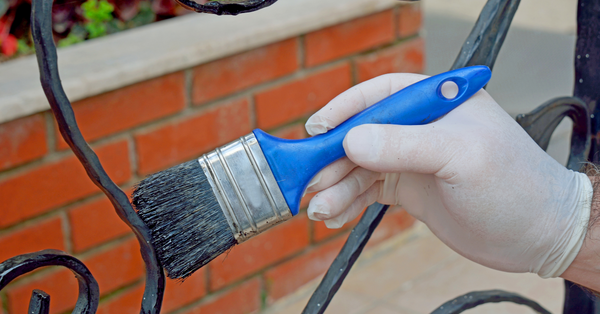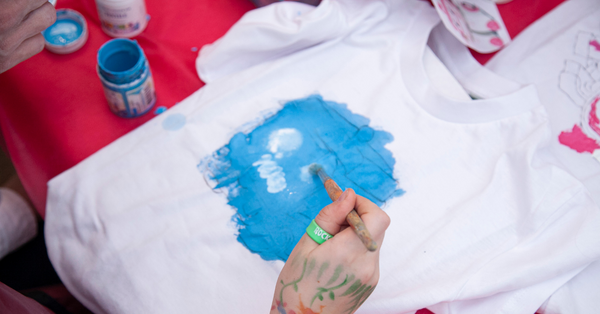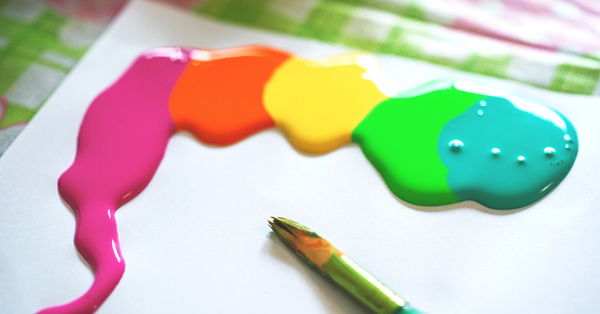
Acrylic paint is a popular and versatile art medium, used by many professional and amateur artists alike. But how does it fare on watercolor paper? Can you use acrylic paint on watercolor paper?
The answer is yes, you can use acrylic paint on watercolor paper. Watercolor paper is a suitable surface for acrylic painting because it is thick and durable, so it won’t buckle or warp under the weight of the paint. Additionally, the paper absorbs the paint, which helps to create a more even application.
However, keep reading to learn about a few things to keep in mind when using acrylic paint on watercolor paper.
TABLE OF CONTENTS
Characteristics of Watercolor Paper
Watercolor paper is typically heavier than traditional drawing paper, often ranging from 140 lb. to 300 lb. weight. This thickness and weight helps to support the additional water used in the painting process and prevents the paper buckling or warping.
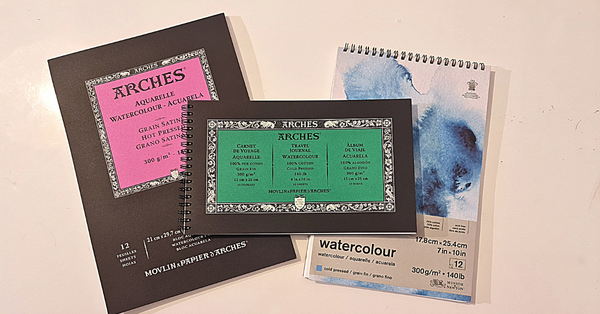
When working with acrylics, you should use a heavier grade of watercolor paper to ensure that the paint doesn’t bleed or seep through the paper. Watercolor boards like the Canson XL Watercolor Boards are a great option for acrylic painting as they are completely resistant to bending or warping; however, they are slightly more expensive than their paper alternative.
Hot Press vs Cold Press Watercolor Paper
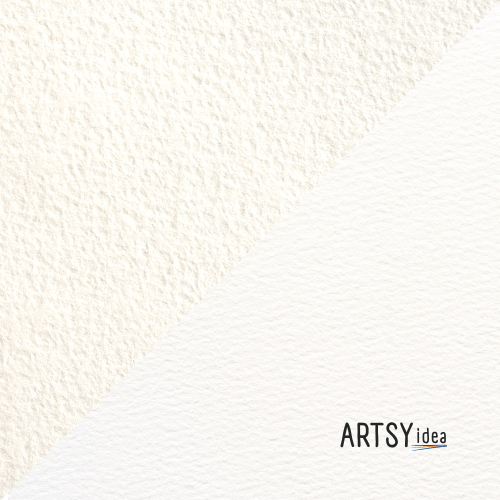
Watercolor paper is usually textured and may be either cold pressed (medium texture) or hot pressed (smoothest texture). It is designed to be absorbent, so it can easily absorb water, allowing the paint to spread evenly across the page. However, if you’re painting with acrylics, you might want to opt for a hot pressed watercolor paper as the bumps from the rough texture can sometimes get in the way of your desired results.
Watercolor Paper Color and Size
Watercolor paper is usually white in color, though some manufacturers offer off-white or cream-colored paper as well, and it comes in a variety of sizes, from postcard size to large sheets.
Acid-Free Watercolor Paper
Finally, you’ll want to select an acid-free paper to avoid yellowing overtime. Synthetic papers are great because they are PH neutral making them less prone to warping; however, these papers are also typically the least absorbent which is the opposite of what you want when painting with acrylics.
Pros and Cons of Using Acrylic Paint on Watercolor Paper
There are many pros and cons to using acrylic paint on watercolor paper. Below are some of the main things to consider before starting your next project.
Types of Effects You Can Create
One of the biggest advantages of using acrylic paint on watercolor paper is the variety of different effects you can create. Acrylic paint is a much thicker and more opaque medium than watercolor paint. It’s best to use acrylic paint on watercolor paper when you want to achieve a more vibrant and saturated color. The thicker paint will also provide better coverage on the paper, allowing you to create bolder and more vivid artworks.
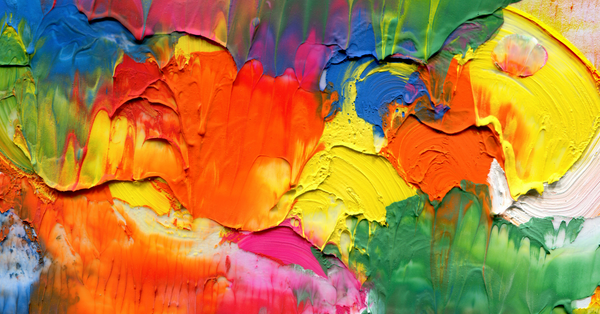
Here are some methods and techniques to get you started:
- Color Blending: By changing the amount of water used to dilute the acrylic paint, you can blend different colors together to create a variety of unique effects. Be cautious about how much water you use, though, because acrylic paint is not water soluble when wet.
- Color Washes: Paint thin layers of acrylic paint on watercolor paper and blend them together to create a soft, subtle wash.
- Textures: You can use a variety of tools to create texture in acrylic paint on watercolor paper, such as a brush, palette knife, or even a toothbrush.
- Stencils: By using a stencil, you can create designs and patterns with the acrylic paint.
- Dry Brushing: Create a textured effect by lightly brushing the dry paint onto the paper.
- Splattering: Dip a brush into the acrylic paint and flick it onto the paper for a splattered effect.
- Glazing: Create a transparent layer of color by adding a glaze to the paper.
Priming the Paper
Since watercolor paper is more absorbent than canvas, you should be sure to use a primer to seal the paper and protect it from any damage. Primer should be paired with using a heavier grade of watercolor paper to ensure that the paint doesn’t bleed or seep through the paper. You can use a gesso primer like this one by Winsor & Newton.
Buckling
When acrylic paint is applied to watercolor paper, the paint absorbs the water in the paper and causes it to swell. This swelling can cause the paper to warp and buckle. This is why it is so important to use a primer and only work on a thicker, heavier watercolor paper.
Pros & Cons of Using Acrylic Paint on Watercolor Paper
Pros
- You can create a wide variety of effects
- You can create a more vibrant finish
Cons
- You should prime the paper first with Gesso
- The paper can buckle or warp
Best Types of Paper for Acrylic Paint
While watercolor paper is a great material to paint with acrylics, there are several other types of papers which work well with acrylics. For example, drawing paper, printmaking paper, acrylic paper, and mixed media paper. Here are the pros and cons of each, along with product recommendations.
Drawing Paper
Acrylic paints work great on drawing paper. Drawing paper is inexpensive and you get a lot of surfaces to paint on, so it’s ideal for practice. Though if you are going to use drawing paper with acrylic paints, make sure you opt for a heavyweight paper (at the very least 100GSM). Thick drawing paper will help reduce warping and buckling (but won’t eliminate it entirely).
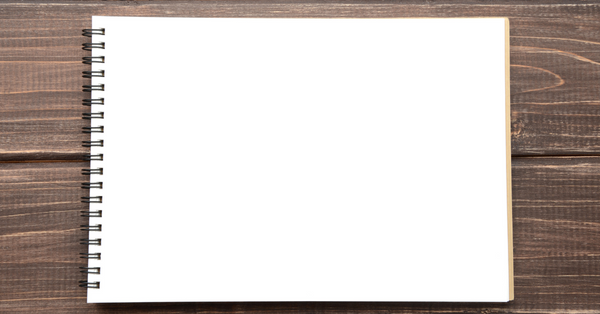
But even though acrylic paints will often hold well on drawing paper, I wouldn’t recommend it for final pieces. You’ll need a sturdier option, like printmaking or acrylic paper.
If you are going to opt for drawing paper, just be sure to prime the surface with gesso (like this one) before painting to create a smooth layer and get an even coverage of your paint.
Pros & Cons of Using Acrylic Paint on Drawing Paper
Pros
- Affordable – good for practice
- Thicker paper options are available that hold paint well
Cons
- The paint might seep through the pages (if too thin)
- Paint may not adhere well to the paper, which could lead to it peeling or flaking off over time
- May require a primer
- Not ideal for final pieces
Printmaking Paper
Printmaking paper is ideal for painting with acrylics, as it has a heavy weight and paper surface that can hold significant amounts of paint. This ensures great coverage and prevents the need for multiple coats of paint.
Printmaking paper is known to be acid-free, making it suitable for long-term projects and artwork that you plan on displaying or selling. Also, this type of paper helps prevent warping and buckling during the drying process so your painting can last longer and look better!
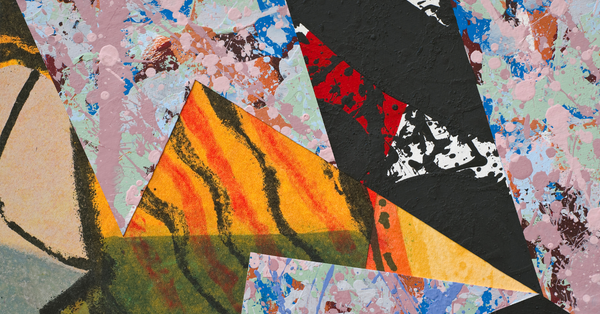
Recommendation:
The Strathmore Printmaking Paper is a high-quality printmaking paper that works great for acrylic paints, and best reserved for final pieces!
Pros & Cons of Using Acrylic Paint on Printmaking Paper
Pros
- Great for final pieces
- Thicker options hold acrylic paint well, without warping
Cons
- Costlier than regular paper
- Can be difficult to layer and can be prone to cracking or flaking if not properly applied
- Can take a while for the paint to dry
Acrylic Paper
As the name implies, acrylic paper is ideal for use with acrylic paints. It’s thick, durable and creates high quality results. With its tight-bonded surface, acrylic paper won’t easily tear and holds up so your work doesn’t flake, crack or fall apart as some other surfaces do. Its waterproof properties also help maintain color–vibrant hues will stay vibrant longer when painted on acrylic paper. Best of all, you don’t need to prime it!
However, it is expensive, which can be a big drawback. Also, the paint dries very quickly on the paper, which can be a plus or minus.
Recommendation:
For acrylic paint paper, I highly recommend the Canson XL Oil and Acrylic Pad. It’s thick enough (290 gsm) to withstand a few washes of water without buckling or warping, and it’s really affordable – 24 sheets in a pad. It has a canvas-like texture that’s really nice to paint on, and colors don’t bleed at all. A great option for beginners.
Pros & Cons of Using Acrylic Paint on Acrylic Paper
Pros
- Acrylic paper is thicker, more durable, and less prone to tearing than regular paper
- It is water resistant and can be easily wiped clean
- Acrylic paper has superior color-fastness and will not fade or be affected by light
- It is ideal for making art prints, cards, and posters that will last for years
- It can be used in a variety of craft projects and is great for both painting and drawing
Cons
- Acrylic paper is expensive!
- Paint dries quickly on the surface, which can be a con for some artists
Mixed Media Paper
Mixed media is my personal favorite for most mediums, including acrylic paint. It’s incredibly thick and versatile – which also makes it cost-effective because you can use pretty much any medium on it, whether separately or together. For acrylic paint, thicker mixed media papers hold the paint really well.
The surface of mixed media paper tends to be smooth when compared to say, watercolor paper, which makes it great for detailed paintings. It’s also readily available in other colors like toned tan, toned grey and even black, which can be really fun to use, especially with UV acrylic paints!
If you use a lot of water with your acrylic paint, however, thinner papers might need to be taped down to prevent any warping or buckling that might happen. If you treat your acrylic paints like watercolors, better to use a watercolor block like these watercolor blocks by Arches.
Recommendation:
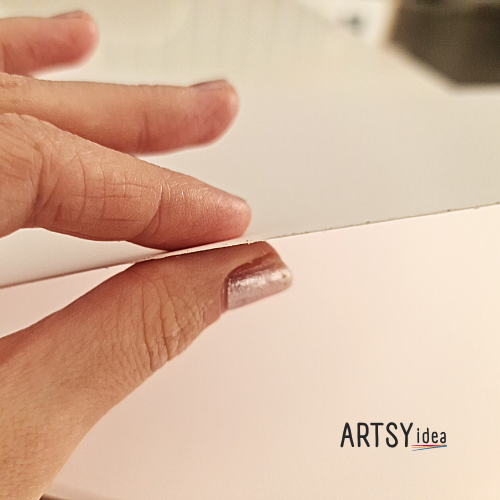
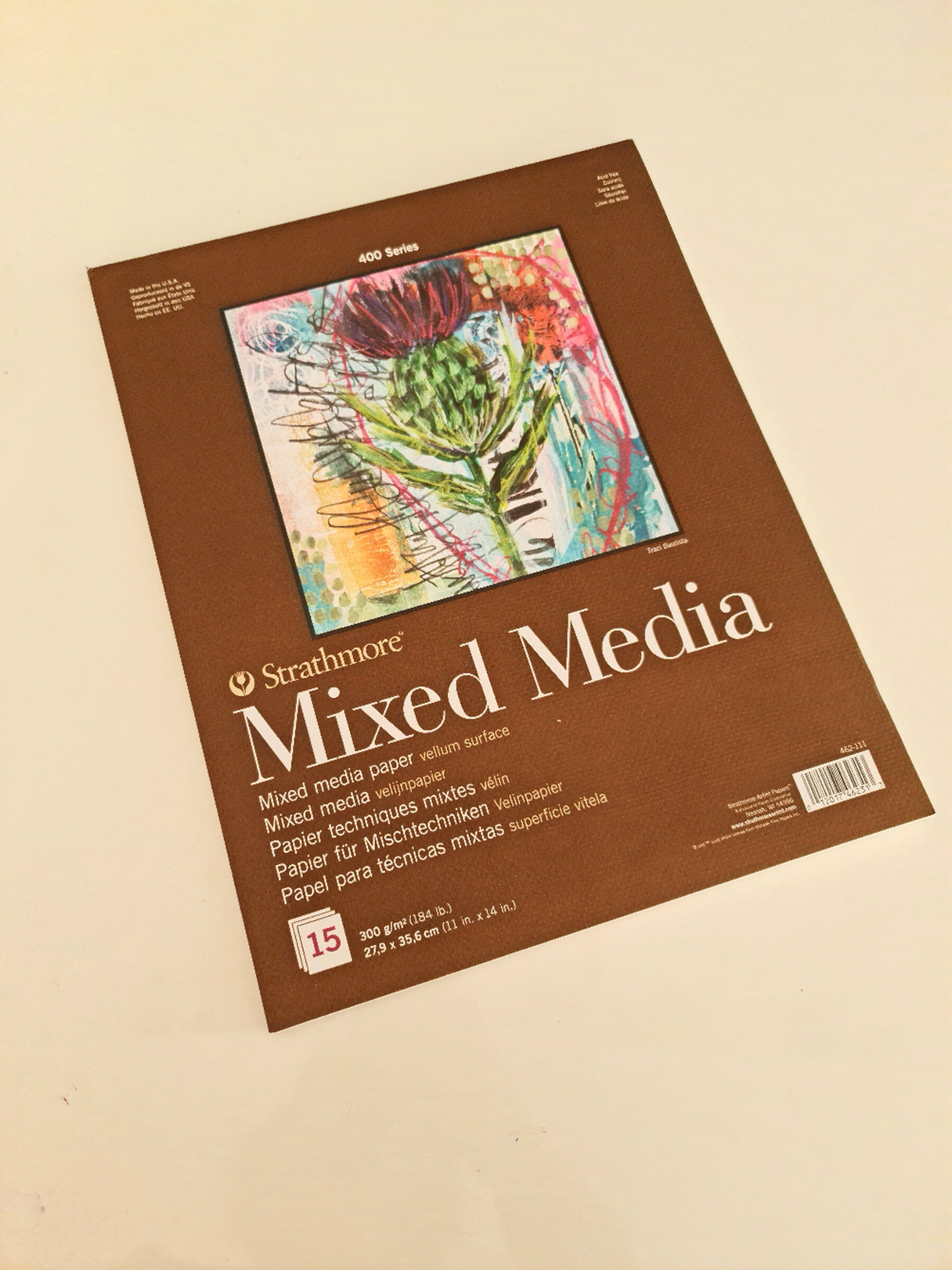
For mixed media paper, my “go to” is the Strathmore 400 Series Mixed Media Pad, which I use for acrylics, gouache, charcoal and pen. It is really thick – 300 gsm – and almost feels like a card rather than paper and has a slightly textured finish, so the paint adheres well, though still very smooth so great for detail painting. It doesn’t ripple at all, even with thick layers of paint. Colors are vibrant, don’t bleed or seep through to the other side of the paper.
The only drawback is if you use a lot of heavy washes of water (like you would with watercolors). Then you might notice the paper will start to disintegrate after a few layers.
Pros & Cons of Using Acrylic Paint on Mixed Media Paper
Pros
- Thick, durable than regular drawing paper, which helps to prevent the paint from bleeding through and keeps the surface smooth
- Slightly textured surface that helps the paint adhere better
- Acid-free
- Versatile – can be used with acrylic, gouache, pencil, pens and more.
- Inexpensive
Cons
- Not suitable for lots of heavy washes of water
- Can be sold in lower weights, which isn’t suitable for acrylic paints
Other Surfaces You Can Paint on With Acrylics
Acrylic paint is an incredibly versatile and durable paint. It can be used on a wide variety of surfaces with ease. Below are just a few of the possibilities of surfaces you can paint with acrylics:
Key takeaway
Overall, acrylic paint can be used on watercolor paper, but there are a few things to keep in mind. Make sure to use a heavier grade of paper and use a primer or gesso like this one by Winsor & Newton to protect the paper.
Following these tips will help you to achieve beautiful results when using acrylic paint on watercolor paper.
Frequently Asked Questions
How do you prepare watercolor paper for acrylic?
Preparing watercolor paper for acrylic is a simple process, but it should never be skipped as the paper is often too thin to withstand the heaviness of acrylic paints. All you have to do is apply a primer, like Gesso, to the paper and let it dry completely before using.
What paper can you use acrylic paint on?
You can use acrylic paint on almost any type of paper, but it should be thick enough to withstand the heaviness of the paint without warping or buckling. At least a 300 GSM paper is recommended.

